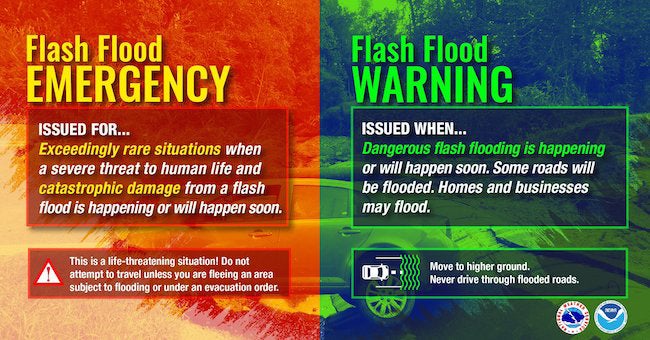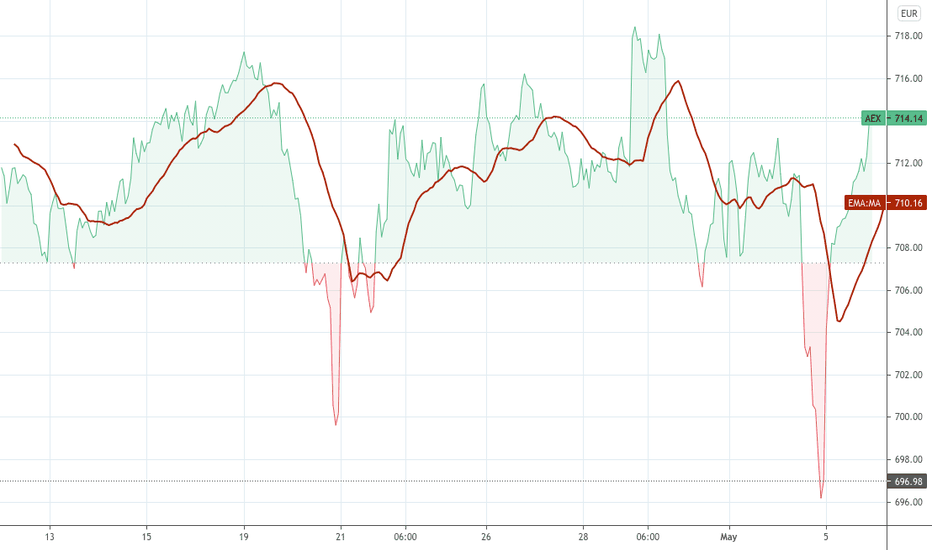Recognizing And Responding To A Flash Flood Emergency

Table of Contents
Recognizing the Signs of an Impending Flash Flood Emergency
Knowing the precursors to a flash flood emergency is the first step in protecting yourself and your loved ones. Understanding the triggers and identifying visual cues are key to timely action.
Understanding Flash Flood Triggers
Flash floods are often caused by intense, short-duration rainfall overwhelming natural drainage systems. Several factors contribute to these events:
- Intense rainfall: Heavy rainfall, particularly over saturated ground, rapidly increases water levels. This intense precipitation can lead to sudden and dangerous flooding.
- Sudden dam or levee failures: A breach in a dam or levee can release a massive volume of water downstream, causing immediate and widespread flash flooding.
- Rapid snowmelt: In mountainous regions, rapid snowmelt during warmer periods can quickly overwhelm rivers and streams, triggering flash floods.
- Upstream flooding: Flooding in upstream areas can quickly translate to downstream flash flooding, giving little to no warning.
These triggers often lead to a rapid water rise, requiring immediate action.
Identifying Visual Cues
Even without official warnings, certain visual cues can signal an impending flash flood emergency:
- Rapidly rising water levels: Noticeably increasing water levels in streams, rivers, creeks, and normally dry washes are major red flags.
- Increased water flow velocity: A dramatic increase in the speed of moving water indicates a potential flash flood. Fast-moving water is incredibly dangerous.
- Debris carried by the water: The presence of debris, such as branches, logs, and trash, carried by the water is a clear sign of increased water flow and potential flooding.
- Muddy water: Cloudier or muddier than usual water indicates increased sediment runoff and a potential for rapid water rise.
- Swollen rivers exceeding their banks: Rivers overflowing their banks are an obvious sign of impending or ongoing flash flooding.
These visual cues, combined with knowledge of flash flood triggers, help you assess the situation accurately.
Heeding Official Warnings
Monitoring weather reports and official alerts is critical. The National Weather Service issues flash flood watches, warnings, and advisories. Understanding these distinctions is crucial:
- Watch: Conditions are favorable for flash flooding. Stay informed and be prepared to act.
- Warning: Flash flooding is imminent or occurring. Take immediate action to protect yourself.
- Advisory: Flash flooding is possible. Be aware of conditions and take precautions.
Utilize weather apps, emergency alert systems (like NOAA's Weather Radio), and local news broadcasts to stay updated on current flood warnings.
Creating a Flash Flood Emergency Preparedness Plan
Proactive planning significantly improves your chances of surviving and mitigating damage during a flash flood emergency.
Developing an Evacuation Plan
A well-defined evacuation plan is paramount:
- Identify safe evacuation routes: Map out multiple routes to higher ground, considering potential road closures.
- Establish a meeting place: Designate a specific location for family members to reunite after evacuation.
- Pack an emergency kit: Prepare a kit containing essential supplies like water, non-perishable food, first-aid supplies, medications, important documents, and flashlights. Consider extra batteries and a portable charger.
This preemptive planning ensures efficient and safe evacuation during a flood emergency.
Protecting Your Property
Protecting your property before a flash flood strikes can minimize damage:
- Move valuables to higher ground: Relocate important documents, electronics, and other valuable items to upper floors or elevated storage.
- Unplug electrical appliances: Disconnect appliances to prevent electrical hazards from floodwaters.
- Turn off gas lines (if safe to do so): Shut off gas lines if you have the knowledge and it's safe to do so; otherwise, leave it to professionals.
- Protect your home from flood damage: If time permits, use sandbags or flood barriers to protect your home’s foundation.
These actions, while not always possible during a sudden flash flood, can lessen the impact of flooding.
Responding to a Flash Flood Emergency
Swift and decisive action is critical during a flash flood warning.
Immediate Actions
When a flash flood warning is issued or you observe imminent danger:
- Move to higher ground immediately: This is the most crucial step. Do not wait for further instructions.
- Avoid driving through floodwaters: Floodwaters can be deceptively deep and swift, easily sweeping away vehicles. Remember: “Turn around, don’t drown.”
- Do not attempt to walk or swim in floodwaters: Floodwaters often contain hidden debris and strong currents that can be life-threatening.
- Seek shelter in a sturdy building: If immediate evacuation isn’t possible, find sturdy shelter above the flood level.
Prioritizing your safety is paramount in these situations.
Seeking Help and Assistance
If you or others are in danger:
- Call emergency services: Dial 911 or your local emergency number immediately.
- Contact family and friends: Let them know your location and situation.
- Follow instructions from emergency personnel: Cooperate fully with rescue teams and follow their guidance.
Remember, seeking help is not a sign of weakness; it's a crucial step in ensuring survival during a flash flood.
Conclusion
Recognizing the warning signs of a flash flood emergency, developing a comprehensive preparedness plan, and taking swift action during an event are crucial for survival. Understanding flash flood triggers, heeding official warnings, and knowing how to protect your property and yourself can significantly reduce the risk. Don't wait for a flash flood emergency to strike; create your preparedness plan today. Learn more about flood safety, how to prepare for a flash flood, and what to do during a flash flood, and share this vital information with your loved ones to ensure the safety of your community. Being prepared for a flash flood emergency can save lives.

Featured Posts
-
 The Financial Aspects Of Your Escape To The Country
May 25, 2025
The Financial Aspects Of Your Escape To The Country
May 25, 2025 -
 80 Millio Forintos Extrak Ezen A Porsche 911 Esen
May 25, 2025
80 Millio Forintos Extrak Ezen A Porsche 911 Esen
May 25, 2025 -
 Amsterdams Aex Index Significant 4 Drop
May 25, 2025
Amsterdams Aex Index Significant 4 Drop
May 25, 2025 -
 Hells Angels Motorcycle Club Mourns The Loss Of Craig Mc Ilquham At Sundays Memorial Service
May 25, 2025
Hells Angels Motorcycle Club Mourns The Loss Of Craig Mc Ilquham At Sundays Memorial Service
May 25, 2025 -
 George Russells 1 5m Debt Repayment A Sign Of Things To Come At Mercedes
May 25, 2025
George Russells 1 5m Debt Repayment A Sign Of Things To Come At Mercedes
May 25, 2025
